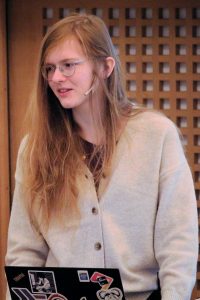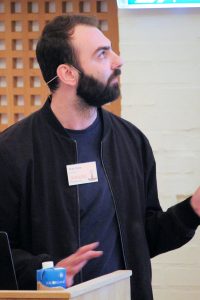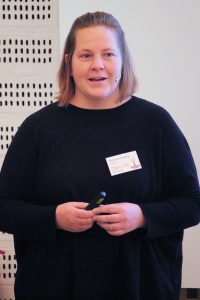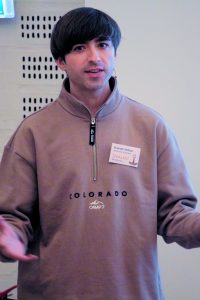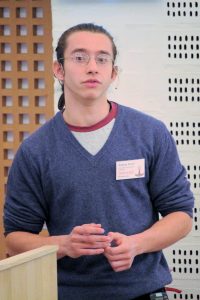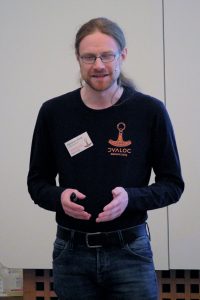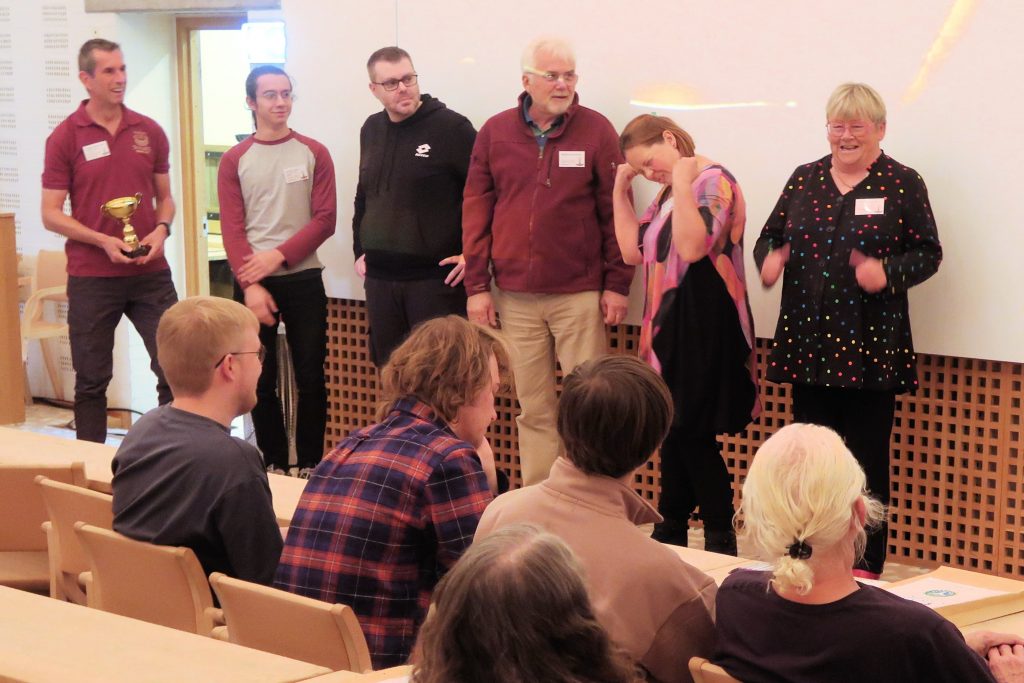This week marks one year since Jada joined Dyalog Ltd, and we asked her about her experiences thus far.
“It’s truly been a whirlwind of a year. I don’t know where the time has gone! It’s been intense, but in the best way possible. I’ve been able to get a feel for everything that being a part of Team Dyalog involves in a very short amount of time, from my first user meeting (Dyalog ’23) to my first product release (Dyalog v19.0). It’s been a steep, but fun learning curve.”
Jada joined us when it became apparent that the administrative needs of the company were growing. She was tasked with taking on some of the jobs that were being done by the Karen and Stine (then the Financial Officer). However, Jada was familiar with Team Dyalog even before she joined, as she had previously attended Dyalog ’19, Dyalog ’22, and various Dyalog internal events as a guest of her partner, Rich Park. Through Rich, Jada was introduced to Dyalog and the world of array programming. “I’ll be honest, a lot of the technical stuff does not yet make sense to me. But that just means there’s so much still to learn, which keeps my work life very interesting. Seeing others try to understand APL code reminds me of Derrida’s views on language, intention, and the need for deconstruction.”
Jada’s daily routine has begun to take shape. “Initially, I had so much to learn, it was rather daunting. From our products/services, our customers, my colleagues, the history of the company, to my actual job…I could go on! But all that initial familiarisation work was worth it, and I had plenty of support along the way.”
So, what does Jada actually do? “Well, think of all the things you need to do to run a business. That’s what I do. I help wherever I can. I deal with office maintenance, renewals for licences, billing, sales of physical products (books, APL keyboards), contract reviews, and all things compliance. I’m also an Apprentice Cat Herder – luckily, I’m learning from the best! Karen has really been my rock this year. She’s one of the most thorough and competent professionals I’ve ever met. I’m hoping to continue to learn a lot from her and Stine.”
 Jada also enjoys her life outside work. “I like to read (fiction and Japanese manga), love going for long walks and the occasional run in the woods, and canoeing the Thames with Rich. I always enjoy a good night out as well – gigs, bars, and dancefloors call my name! My latest hobby has been learning to play bass guitar. I’ve got no immediate plans to sell out Wembley, but it’s fulfilling to set my sights on a piece, learn it bar by bar, and gradually improve and gain muscle memory. It can be frustrating at times, but practising is so much fun. My rhythm has improved a lot too.”
Jada also enjoys her life outside work. “I like to read (fiction and Japanese manga), love going for long walks and the occasional run in the woods, and canoeing the Thames with Rich. I always enjoy a good night out as well – gigs, bars, and dancefloors call my name! My latest hobby has been learning to play bass guitar. I’ve got no immediate plans to sell out Wembley, but it’s fulfilling to set my sights on a piece, learn it bar by bar, and gradually improve and gain muscle memory. It can be frustrating at times, but practising is so much fun. My rhythm has improved a lot too.”
Overall, Jada has really enjoyed her first year with us. “I’m so grateful to be here. You see a lot of corporate speak about ‘family’ to distract from poor business practices, but not at Dyalog Ltd. Although this is a company, the heart and soul are the people behind it and the community around us. We’re real, we care, we listen. There’s no apathy or shilling. The passion for Dyalog is infectious. My colleagues’ hard work, meticulousness, and honesty motivate me to apply those qualities to my own work. When I work hard and produce quality work, it’s recognised and that makes me feel valued. I couldn’t ask for a better job with better people.”



 Follow
Follow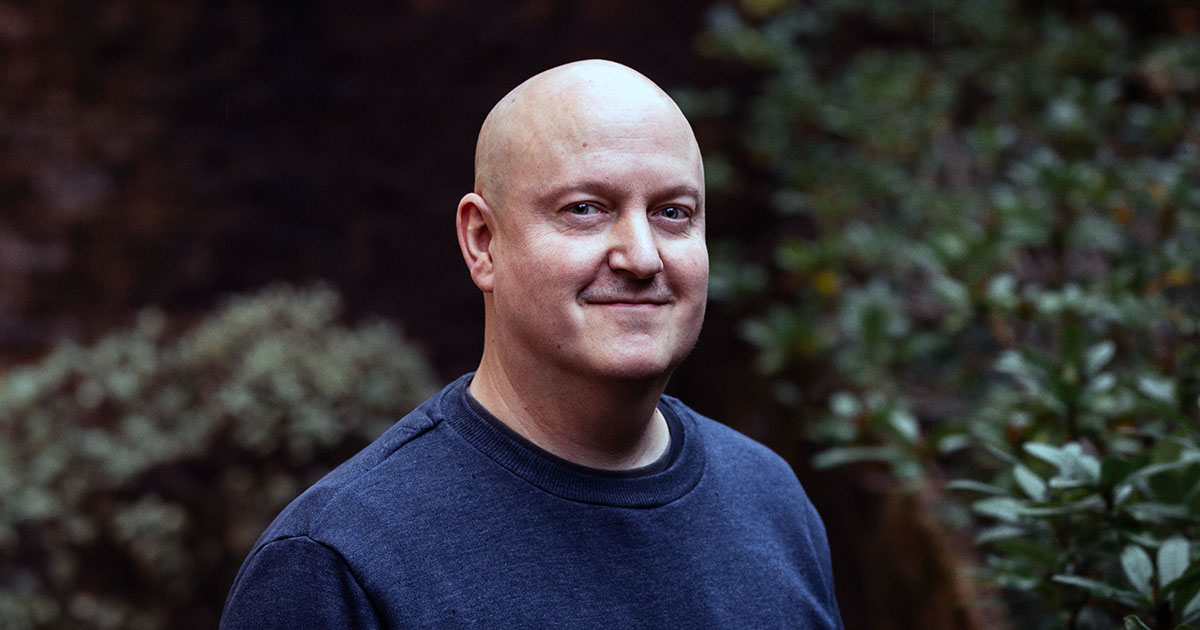
 After graduating from the University of Portsmouth with a bachelor’s degree in software engineering, Abs started investigating IT roles. He wanted something that provided a challenge, working for a team that was passionate about what they do, and in which he could contribute to that effort through the software and IT abilities that he has accumulated; with Dyalog Ltd he found it! Abs was hurled into the world of APL, which was very different to the Python that he was used to. Although his role doesn’t involve much APL, he appreciates how compact APL solutions can be when wielded correctly. Armed with a fresh perspective and a helpful attitude, he joins our IT department hoping to maintain and improve the current IT infrastructure and provide technical solutions to anyone that needs it.
After graduating from the University of Portsmouth with a bachelor’s degree in software engineering, Abs started investigating IT roles. He wanted something that provided a challenge, working for a team that was passionate about what they do, and in which he could contribute to that effort through the software and IT abilities that he has accumulated; with Dyalog Ltd he found it! Abs was hurled into the world of APL, which was very different to the Python that he was used to. Although his role doesn’t involve much APL, he appreciates how compact APL solutions can be when wielded correctly. Armed with a fresh perspective and a helpful attitude, he joins our IT department hoping to maintain and improve the current IT infrastructure and provide technical solutions to anyone that needs it.


